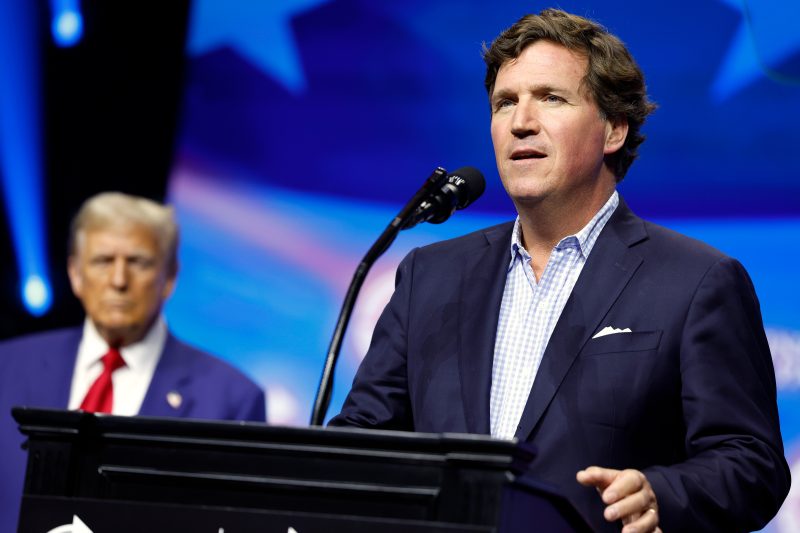
Again: Polls are not going to make Democrats’ case on Biden
A few things seem fairly obvious when it comes to the 2024 presidential election.
One is that President Biden is not the candidate he once was. His ability to press his case is diminished, and questions about his fitness will mean that every appearance through Election Day will be adjudicated not only on policy and rhetoric but on performance. Every speech or rally will serve as an amateur cognitive exam, with a significant portion of the country proclaiming that he’s failed even before he begins speaking.
Another is that both Biden and former president Donald Trump are broadly unpopular. June polling from Pew Research Center indicates that fully a quarter of Americans have unfavorable views of both major-party candidates, the highest percentage on record and above the 20 percent who viewed both candidates negatively in mid-2016.
This, however, is also Joe Biden’s central political asset: He isn’t Trump. Most Biden voters plan to vote for him primarily because they want to block Trump’s path back to the White House.
Just as questions about Biden’s age and fitness aren’t going to dissipate between now and Election Day, neither will the fact that he isn’t Donald Trump and doesn’t have Trump’s liabilities. Barring some dramatic shift in how voters view Trump — a shift that would presumably be measurable soon, given both the assassination attempt over the weekend and the ongoing Republican convention — Biden’s not-Trumpness will continue to be an asset until voting is complete.
There are a lot of people who aren’t Donald Trump — about 260 million adults in the United States alone. Given that Democrats have consistently expressed openness to having a different candidate at the top of the ticket (nearly two-thirds in April polling from Pew, nearly two-thirds in recent NBC News polling and nearly two-thirds in new AP-NORC polling), it would seem that plucking one of those other 260 million people out of the crowd and scribbling their name in at the top of the ballot would be useful. After all, you still get the benefit of their not being Trump, but without the downside of that (generally deserved) scrutiny of Biden’s performance.
The problem for Democrats is that, while Biden clearly trails Trump nationally and in swing states, polling keeps showing that non-random replacements for Biden don’t fare significantly better.
That’s true nationally, where other Democratic politicians are unable to pull away from Trump. Below, for example, are recent post-debate numbers from Fox News. Biden trails within the margin of error. So does Vice President Harris and Michigan Gov. Gretchen Whitmer. California Gov. Gavin Newsom runs even — but the margin of error means that this difference is not statistically important.
This evenness is also true at the state level. The New York Times and Siena College recently polled Pennsylvania and Virginia, finding that Biden and Harris ran about as well against Trump in each state. The incumbent Democratic candidates in each state fared better — but that’s largely because their Republican opponents didn’t have the same level of support as Trump.
This issue of familiarity is central to the discussion. On Monday, a group that advocates for replacing Biden on the ballot pointed to candidates faring better against Trump once you correct for the lack of name recognition.
5) Polls that adjust for name-recognition show alternatives significantly outperforming Biden. Example 1: (Welcome PAC) pic.twitter.com/HIdGhrc6YP
— PassTheTorchJoe (@PassTheTorch24) July 15, 2024
“Polls that don’t adjust for name recognition don’t mean much,” the group insisted.
They do, though.
Polls that don’t adjust for recognition are measuring views as they stand. Perhaps those views will change over the course of a campaign. Probably they will, to some extent. But “adjusting for name recognition” — by, say, reading a brief biography to poll respondents — simply shifts the uncertainty from “how will they change” to “will they change like this.” Campaigns are messy and strengths and weaknesses are hard to predict. Well-vetted candidates like Biden and Harris will probably see less movement — up or down — than candidates who haven’t been defined in the public eye.
And never mind that the graph above uses a contracted vertical axis and skips margins of error, so Biden’s 3-point deficit (in a poll from a random political action committee) looks far worse than Sen. Sherrod Brown’s (D-Ohio) 5-point advantage. Depending on the margin of error, it probably isn’t.
Recent polling from Marist University, conducted for NPR and PBS NewsHour, found that those who view both Biden and Trump negatively do shift their support to the Democrat in other theoretical matchups against Trump. But overall, the margin between Trump and each Democrat is about the same.
As I’ve written before, this is the fundamental problem on the left at the moment. It seems clear that non-Biden candidates would be able to campaign more effectively than Biden and that Democrats and other voters would rather have a different candidate at the top of the ticket. But it isn’t clear that this would meaningfully affect the trajectory of a race that, like 2020, is largely a referendum on Trump.
This is a life vest for Biden. He is disinclined to step aside, in part because he appears to be tightening his circle of advisers. He can say, accurately, that he has a chance of winning the election, which he does. The polls, despite his poor performance in the debate, show Trump with narrow leads nationally and in swing states — theoretically surmountable leads. The critics clamoring (with increased frustration) for Biden to step aside don’t have much to work with.
Democrats wish they had someone else but will vote against Trump regardless. Trump’s support, driven by his own enthusiastic base, is also stable. Other Democrats might campaign better but, at the moment, don’t obviously fare better.
And Nov. 5 draws closer.



